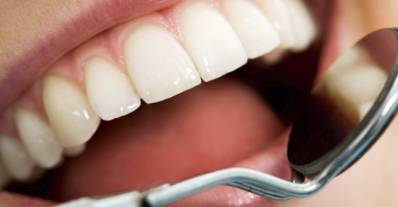Cavities, also known as dental caries, are one of the most common dental issues worldwide. But don’t let their commonness fool you—cavities are a serious concern that can lead to pain, infection, and even tooth loss if left untreated. In this article, we’ll explore various ways to treat cavities, including preventive care, professional treatment options, and tips from dental experts. Let’s take a closer look at how you can stop these tiny troublemakers from turning into major problems.
Understanding Cavities: What Are They and Why Do They Happen?
Cavities are permanently damaged areas in the enamel of your teeth, resulting from a combination of factors like poor oral hygiene, frequent snacking, and sugary drinks. The process starts when bacteria in your mouth convert sugar into acid, which then erodes your enamel, leaving a hole—a cavity.
Key Fact: According to the CDC, nearly 1 in 4 adults aged 20 to 64 have at least one untreated cavity. Early detection is crucial in managing cavities effectively.
Home Remedies: Can You Reverse Cavities Naturally?
The short answer is, no, you can’t reverse an existing cavity with home remedies. However, there are steps you can take to slow or prevent further damage. The focus here is on remineralization—strengthening your enamel to prevent future decay.
Here are a few ways to boost remineralization:
- Fluoride Toothpaste: Fluoride helps remineralize enamel and is often considered the first line of defense against cavities.
- Dietary Changes: Cutting down on sugary and acidic foods can reduce bacteria and acid levels in your mouth.
- Oil Pulling: Some people advocate for oil pulling with coconut oil to help reduce bacteria, but it’s important to note that this is not a substitute for professional treatment.
Professional Treatments: Fillings, Crowns, and More
Once a cavity has formed, professional intervention is needed. Let’s explore the common treatment options dentists use to restore your teeth:
1. Fillings: The Most Common Solution
Fillings are used to repair small to medium-sized cavities. The dentist will remove the decayed portion of the tooth and fill the space with materials like composite resin, amalgam, or even gold. Average cost: $100 to $300 for silver amalgam, or $150 to $500 for tooth-colored composite fillings, depending on the size and location of the cavity.
2. Crowns: For Extensive Decay
If the cavity is too large for a filling, a crown may be needed. Crowns are used to cover and protect the entire tooth, preserving its function. The cost of a crown can range from $800 to $2,500 depending on the material used—ceramic crowns tend to be pricier but look more natural.
3. Root Canal Therapy: When It Goes Deeper
If decay has reached the pulp (the inner part of the tooth containing nerves and blood vessels), a root canal may be necessary. This treatment is often the last resort before extraction. Cost: Between $700 and $1,500, similar to root canal treatments discussed in other contexts.
4. Fluoride Treatments: For Early Signs
In cases where the cavity is detected very early, fluoride treatments may help restore enamel. This is the least invasive and least expensive option, generally costing around $20 to $50.
Preventive Measures: The Best Cure Is Prevention
1. Brushing and Flossing: Proper oral hygiene is your first line of defense. Dentists recommend brushing twice a day and flossing at least once daily to remove food particles and bacteria.
2. Regular Dental Checkups: Visiting your dentist every six months ensures cavities are caught and treated early. Professional cleanings help remove tartar that home care can’t.
3. Sealants: Dental sealants are another great preventive measure. They are a protective coating applied to the chewing surfaces of the back teeth (molars), preventing decay. They can last up to 10 years and cost between $30 to $60 per tooth.
Real-Life Patient Stories: Learning from Experience
Case 1: Emma’s Quick Filling Fix
Emma, a 27-year-old from Florida, noticed a sharp pain while drinking iced coffee. Her dentist found a small cavity and quickly treated it with a composite filling costing $200. Emma says, “I’m glad I went in right away—if I had waited, it could have turned into something more serious and expensive.”
Case 2: Robert’s Crown Adventure
Robert, 52, from Texas, put off his dental checkup for a couple of years. When he finally saw his dentist, the decay had spread to half of his molar. He ended up needing a crown, which cost him $1,200. “It wasn’t pleasant on my wallet, but it saved my tooth,” Robert shares, noting that regular checkups would have saved him a lot of trouble.
Expert Opinions: Insights from Dentists
Dr. Laura Greene, a general dentist in Chicago, notes, “Cavities are preventable for the most part. With proper oral care and a balanced diet, many patients could avoid fillings altogether.” She stresses that catching decay early is the best way to avoid costly treatments down the road.
Dr. Jonathan Marks, an endodontist, adds, “Ignoring cavities can lead to serious health complications beyond oral health—untreated cavities can lead to infections that may even spread beyond the mouth.” His advice? Treat cavities early and don’t fear professional care.
Final Thoughts: Take Control of Your Oral Health
Treating cavities isn’t just about eliminating the pain; it’s about ensuring that your teeth stay healthy for years to come. Whether it’s a small filling or a complex crown, the treatment of cavities plays a significant role in preserving your overall health.
Remember, good habits like daily brushing and flossing, regular dental visits, and a healthy diet can help keep cavities at bay. And, if you do find yourself with a cavity, don’t delay treatment—early intervention is the key to saving both your smile and your wallet.






